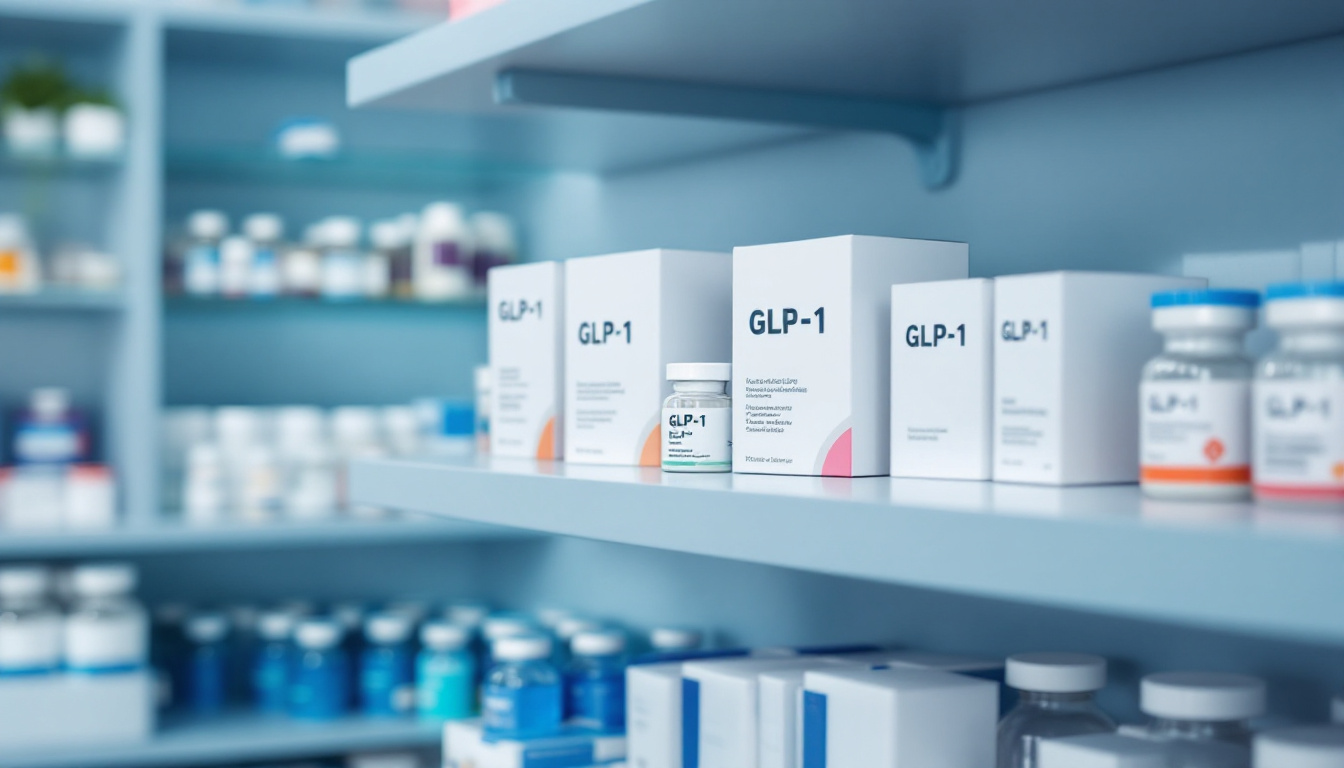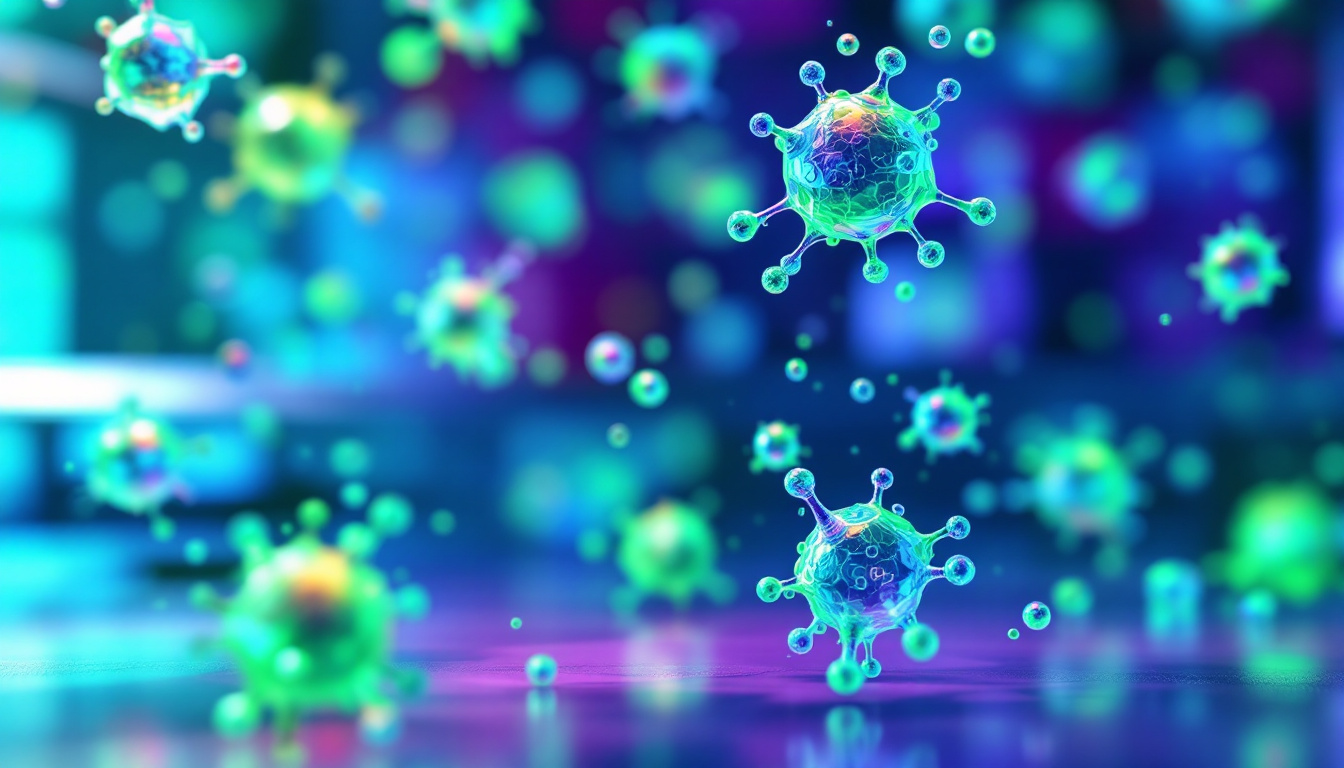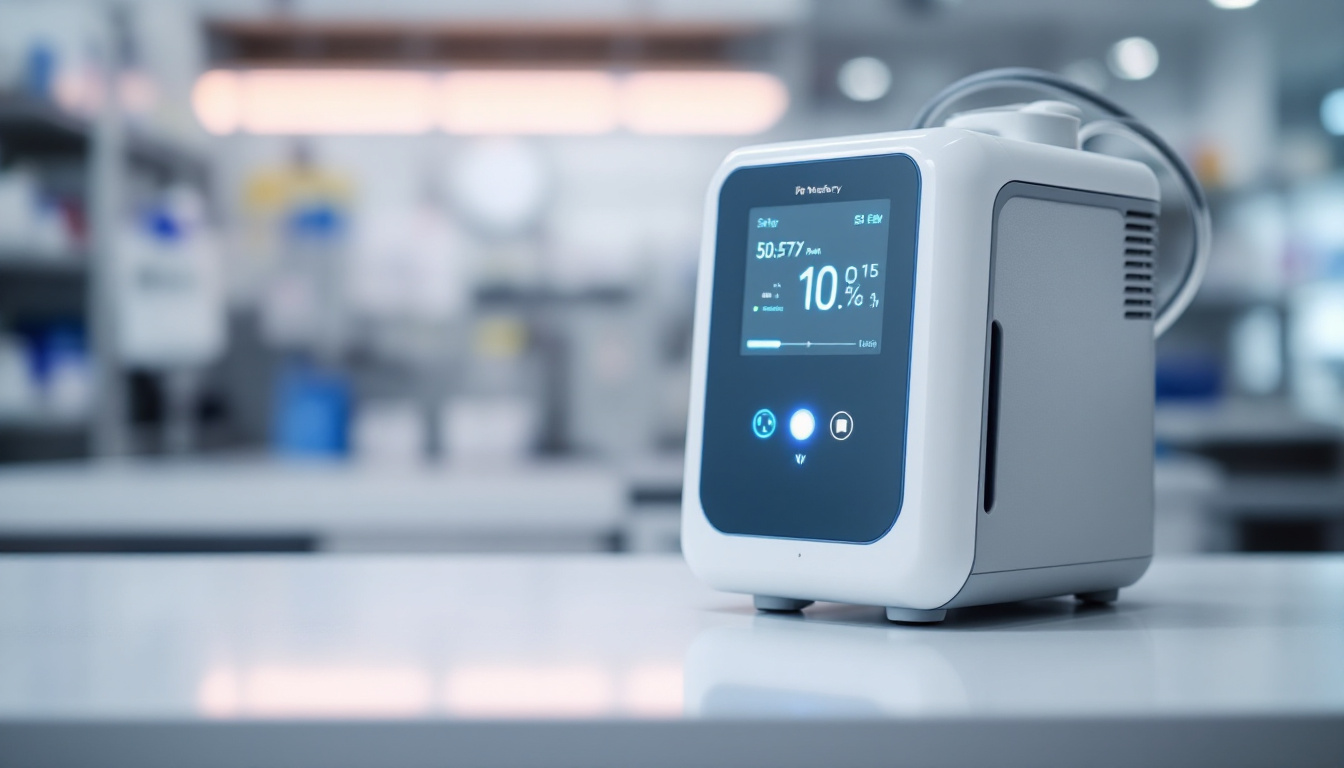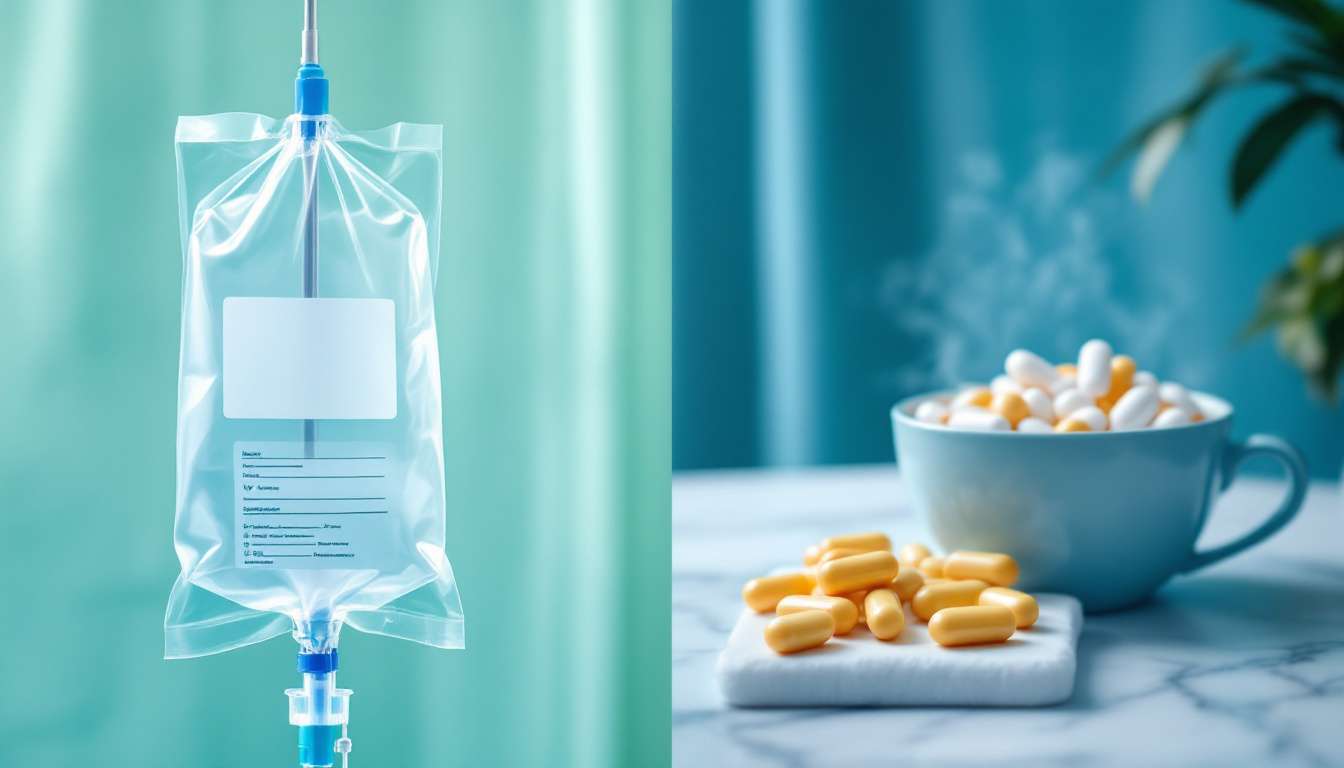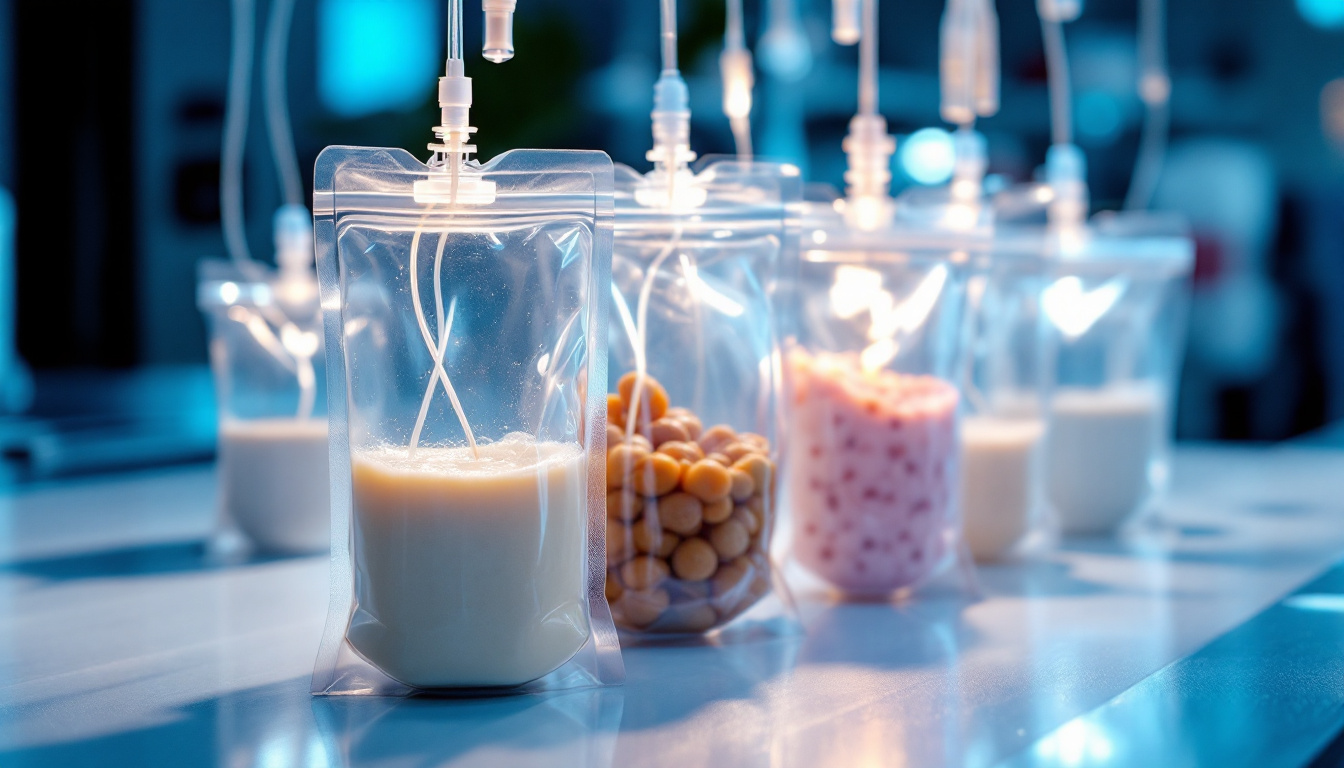How TPN improves nutrition delivery

Understanding Total Parenteral Nutrition (TPN)
Total Parenteral Nutrition (TPN) has emerged as a critical medical intervention for individuals who are incapable of consuming nutrition through the traditional digestive processes. By delivering nutrients directly into the bloodstream, TPN bypasses the gastrointestinal system and provides essential nourishment to patients who would otherwise face malnutrition. This article delves into how TPN improves nutrition delivery, examining its mechanisms, benefits, and applications across various medical conditions.
The Role and Mechanism of Total Parenteral Nutrition
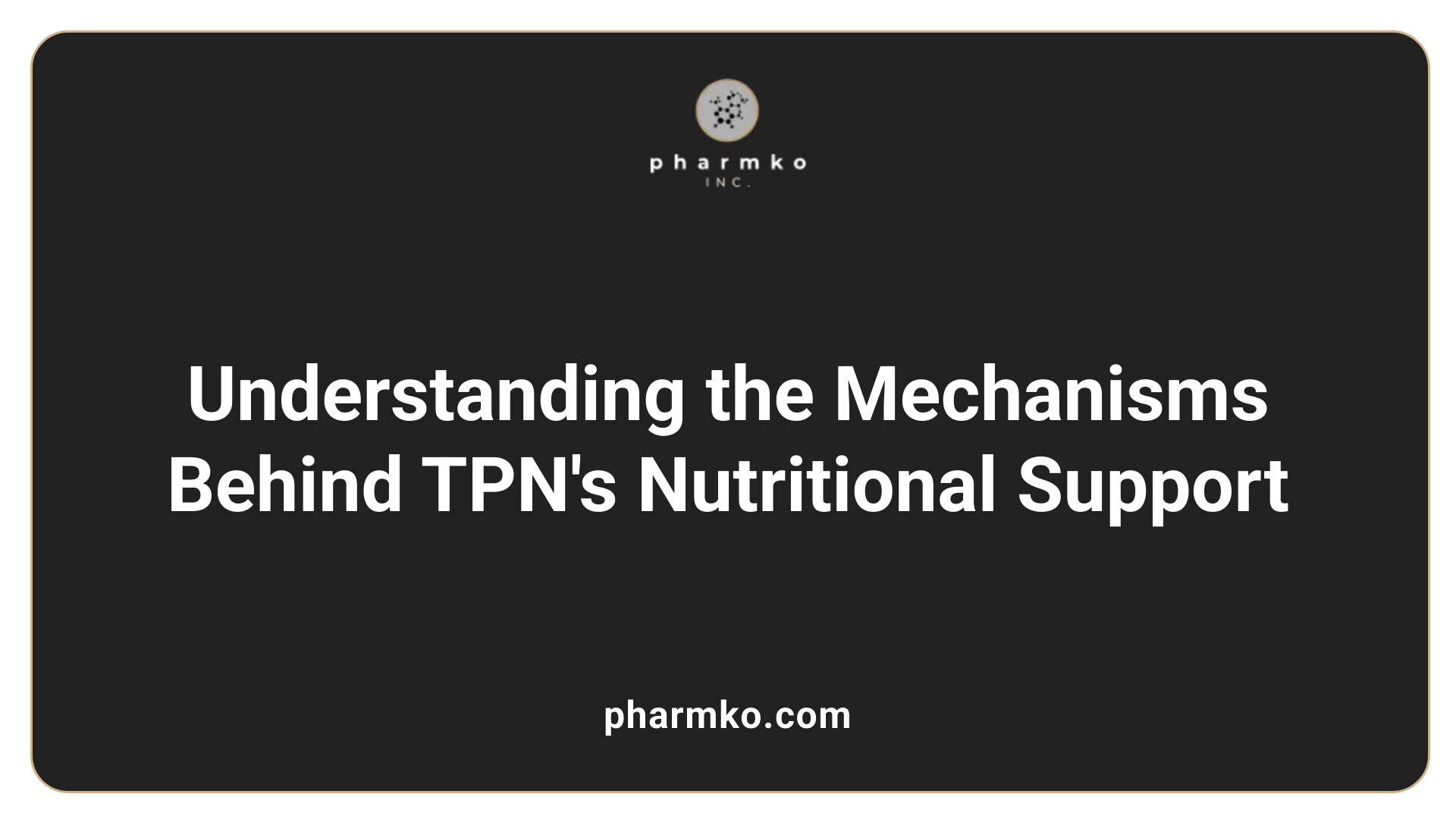
What is Total Parenteral Nutrition (TPN) and how does it provide nutritional support?
Total Parenteral Nutrition (TPN) is a specialized medical treatment that provides the body with essential nutrients intravenously. By bypassing the gastrointestinal tract, TPN delivers a tailored mixture of macronutrients—such as proteins, carbohydrates, and fats—as well as micronutrients, including vitamins and minerals, directly into the bloodstream. This method is critical for individuals who cannot consume or absorb food due to various health conditions like gastrointestinal disorders or following major surgeries.
For patients requiring TPN, maintaining hygiene and proper care of the intravenous catheter is essential to prevent complications such as infections. Regular monitoring through blood tests is necessary to assess the effectiveness of the TPN solution and to make ongoing adjustments to meet individual nutritional needs. These adjustments help in managing electrolyte levels and other metabolic functions, ensuring a balanced supply of nutrients while avoiding potential deficiencies or excesses.
Mechanism of Action
TPN works by supplying a comprehensive nutritional profile tailored to the unique needs of the patient. The TPN solution is administered via a central venous catheter, allowing for direct infusion of the nutrients into the circulatory system. This results in immediate and efficient nutrient absorption, which is especially beneficial for those unable to sustain their nutritional health through traditional oral feeding methods. Each TPN formula is customized based on lab results and healthcare assessments, ensuring the best possible outcomes in terms of nutritional status and overall health. Regular evaluations and adjustments to the TPN formula facilitate long-term management and help avoid complications associated with prolonged parenteral nutrition.
When is TPN Needed? Indications for Use
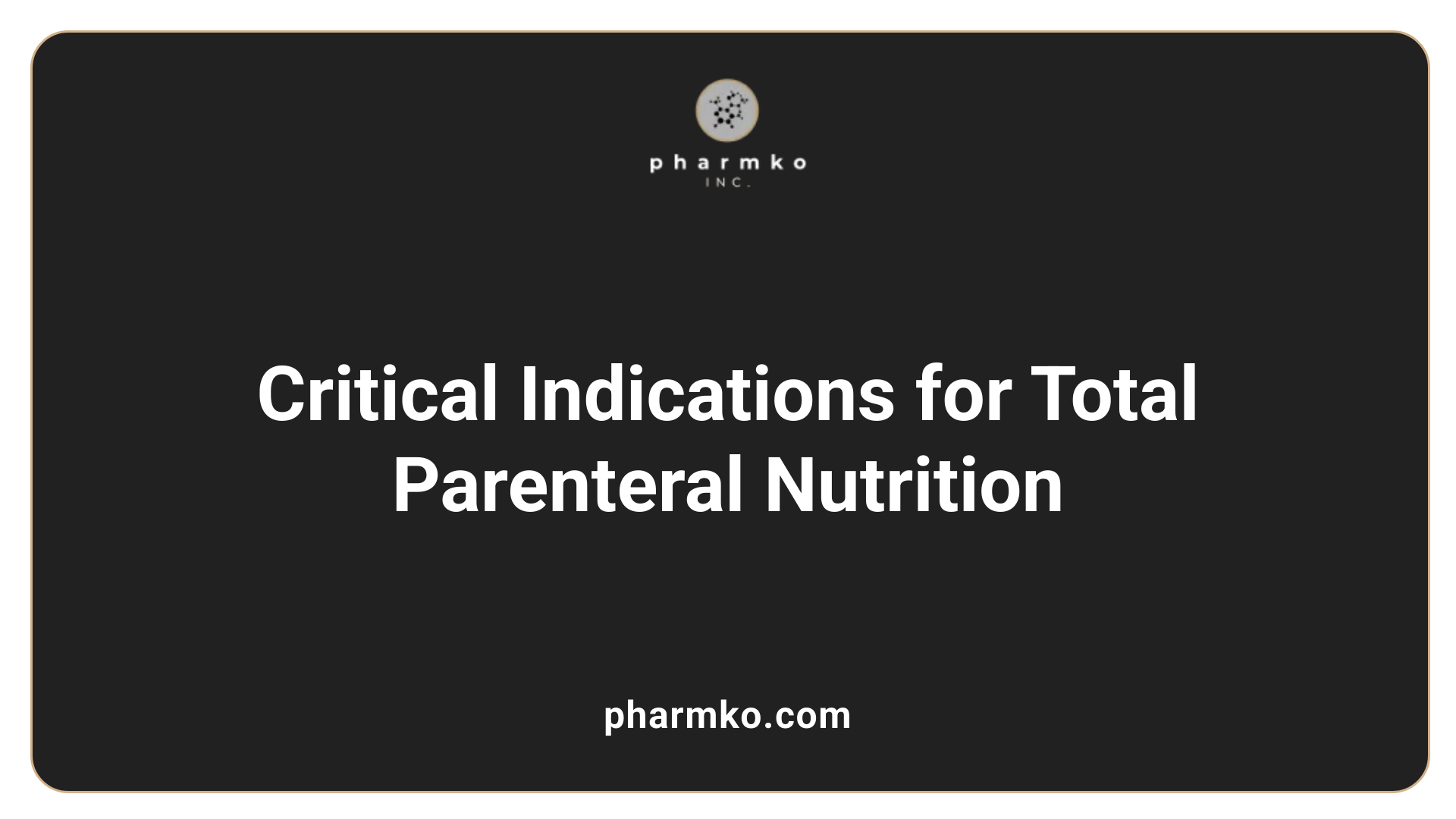
What are the indications for using Total Parenteral Nutrition (TPN)?
Total Parenteral Nutrition (TPN) is indicated for individuals who cannot utilize their digestive systems due to various medical conditions. Key situations include:
- Post-Surgical Recovery: Especially following abdominal surgery, TPN assists in meeting nutritional needs when normal digestion is compromised.
- Gastrointestinal Disorders: Conditions like short bowel syndrome and inflammatory bowel diseases (e.g., Crohn’s disease) necessitate TPN for adequate nutrient absorption.
- Cancer Treatment: Patients undergoing chemotherapy may experience severe side effects that inhibit eating. TPN ensures they receive essential nutrition during treatment.
- Pediatric Needs: Newborns and infants with gastrointestinal complications, such as gastrointestinal anomalies or failure to thrive, benefit significantly from TPN.
Broader indications include:
- Malnutrition: For patients unable to consume enough calories due to prolonged illness or trauma.
- Severe Vomiting or Diarrhea: Cases where food absorption is severely hindered.
Situations necessitating TPN
Using TPN is critical in various scenarios, including:
- Surgical patients who cannot eat for more than 7-10 days.
- Patients unable to absorb nutrients due to intestinal obstruction.
- Those receiving treatment for extensive gastrointestinal disorders.
- Patients with conditions leading to malabsorption or nutrient wasting.
In essence, TPN serves as a life-sustaining therapy for those at risk of malnutrition and its associated complications, allowing for a tailored delivery of essential nutrients directly into the bloodstream.
Breaking Down the TPN Formula
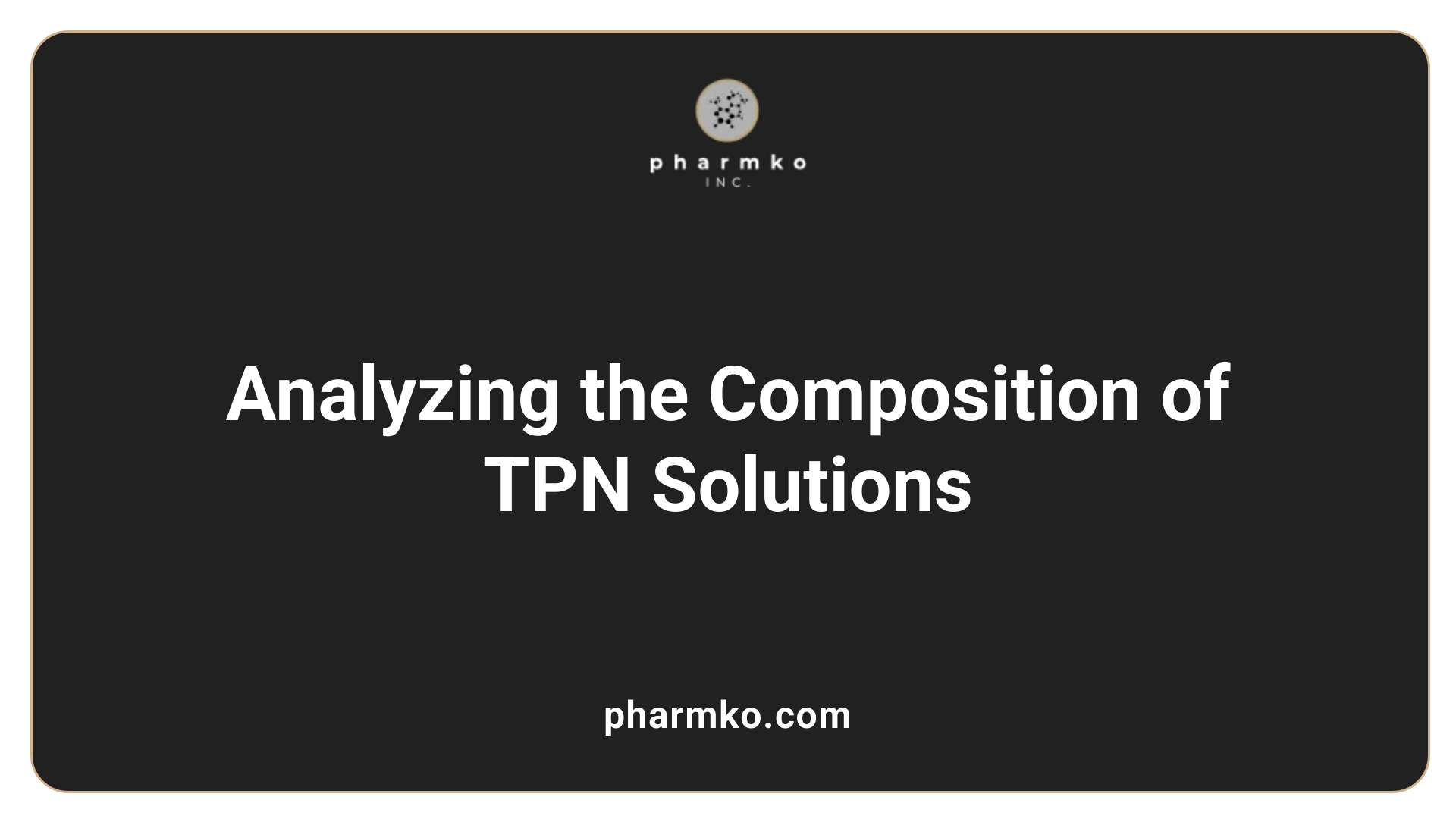
What is the composition of a typical TPN solution?
Total parenteral nutrition (TPN) solutions are carefully formulated to provide complete nutrition through intravenous delivery when a child's digestive system cannot properly process food. A typical TPN solution includes:
| Component | Description | Function |
|---|---|---|
| Amino Acids | Proteins essential for growth and repair | Supports tissue repair and growth |
| Dextrose | A type of sugar (carbohydrates) | Provides a key energy source for body functions |
| Lipid Emulsions | Fats needed for energy and cell structure | Important for hormone production and cellular health |
| Vitamins | Essential nutrients required for various bodily functions | Supports metabolic processes and overall health |
| Trace Minerals | Includes elements like zinc and copper | Necessary for enzyme function and immune system support |
The customization of TPN solutions is vital to ensure they meet the specific health needs of each child. Healthcare professionals perform regular monitoring and adjustments based on lab results, fortifying the TPN formula against potential complications like infections and liver damage. While not painful, TPN administration requires lifestyle changes for families, including ongoing medical oversight. Nevertheless, many children benefit from improved health outcomes and can lead relatively active lives despite these challenges.
Understanding TPN Variants: Customized Solutions
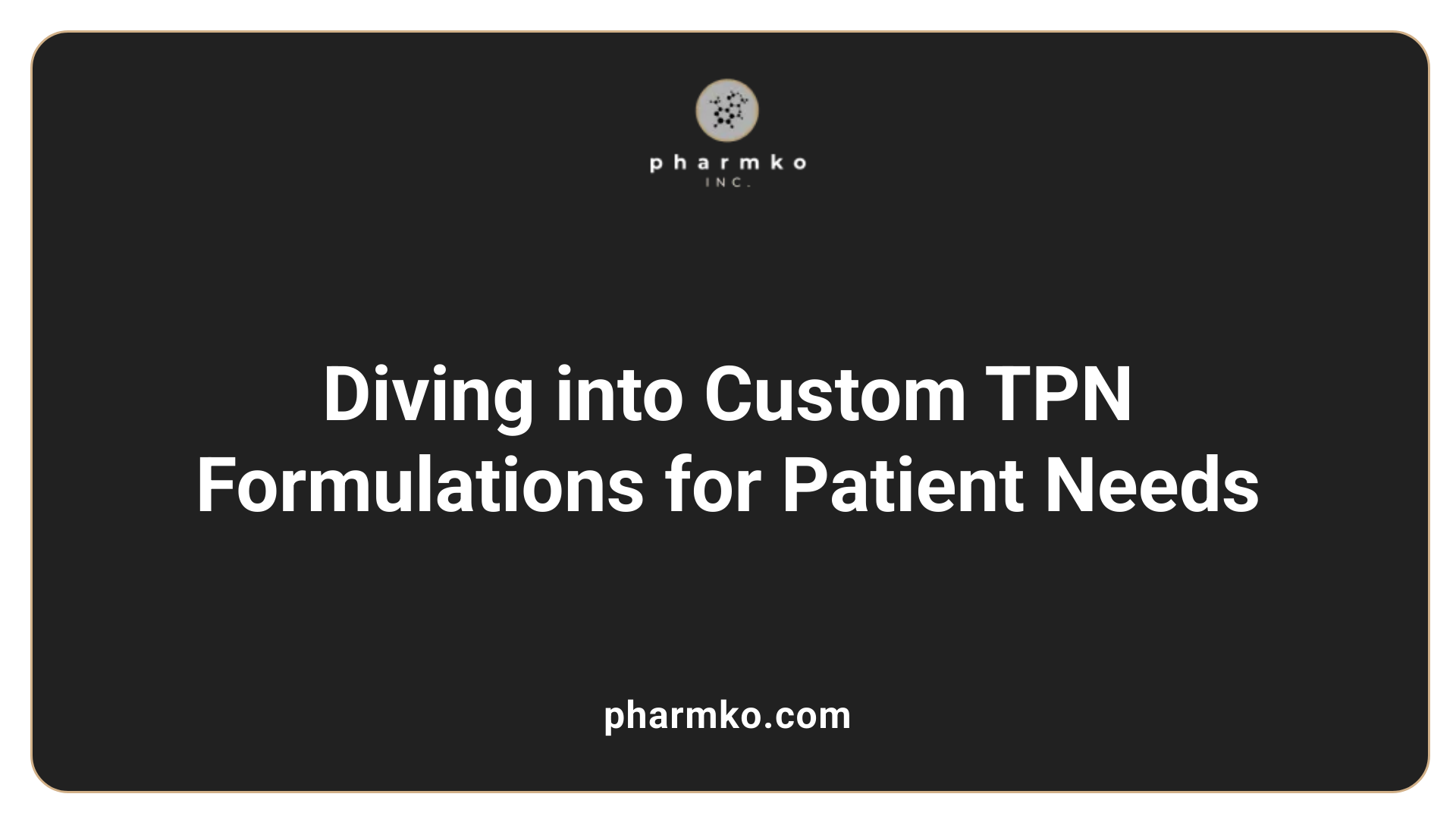
What are common types of TPN solutions available?
Total Parenteral Nutrition (TPN) solutions come in various formulations tailored specifically to meet the individual needs of patients. Two of the most common types include:
| Type | Composition | Purpose |
|---|---|---|
| 2-in-1 | Dextrose (carbohydrates) + Amino Acids (proteins) | Provides essential energy and protein only. |
| 3-in-1 | Dextrose + Amino Acids + Lipid Emulsions (fats) | Offers a comprehensive nutritional profile including fats. |
These formulations are deeply personalized, taking into account several factors such as age, weight, specific health conditions, and individual lab results. This customization helps optimize nutrient delivery and support overall health, especially when the digestive system is non-functional or compromised.
How is TPN customized for patient needs?
Healthcare professionals play a critical role in tailoring TPN solutions to ensure that each patient receives the nutrients they require. Regular assessments and lab tests guide adjustments to:
- Macronutrients: Balancing carbohydrates, proteins, and fats to meet energy needs.
- Micronutrients: Including vitamins, minerals, and trace elements tailored to the patient’s requirements.
- Electrolytes: Monitoring levels to prevent imbalances that can affect health.
The aim is to provide a complete nutritional regimen that supports recovery, growth, and health maintenance, particularly crucial for patients who cannot absorb nutrients through traditional means.
Administering TPN: Steps and Precautions
How is TPN administered and what are the guidelines for healthcare providers?
Total Parenteral Nutrition (TPN) is a critical medical treatment that involves delivering essential nutrients directly into the bloodstream through a central venous catheter (CVC). This approach is vital for patients unable to consume food orally or absorb nutrients through their gastrointestinal tract. The administration of TPN requires adherence to strict guidelines to ensure safety and efficacy.
TPN Administration Process:
- Preparation:
- Wash hands thoroughly to prevent infection.
- Gather all necessary supplies, including gloves, TPN solution, IV tubing, and flushing solution.
- Inspection of TPN Bag:
- Check the TPN bag for leaks, color changes, or particulate matter.
- Patient Verification:
- Confirm patient identity and specific nutritional requirements.
- Line Management:
- Flush the CVC to clear any potential blockage.
- Prime IV tubing carefully to remove air bubbles, ensuring smooth flow of the TPN solution.
- Monitoring:
- Observe the patient for any adverse reactions, such as elevated blood glucose levels or signs of infection at the catheter site.
- Discontinuation:
- Gradually taper off TPN to avoid complications like hypoglycemia when the therapy is no longer needed.
Healthcare Guidelines:
Healthcare providers must adhere to best practices for TPN administration:
- Maintain a sterile environment during preparation and administration.
- Use aseptic technique to connect and disconnect the TPN solution to reduce infection risk.
- Regularly monitor patient biochemical markers to adjust nutrient requirements and ensure optimal metabolic support.
Following these steps can significantly reduce the risk of complications and enhance the overall effectiveness of TPN therapy.
Balancing Benefits and Risks of TPN
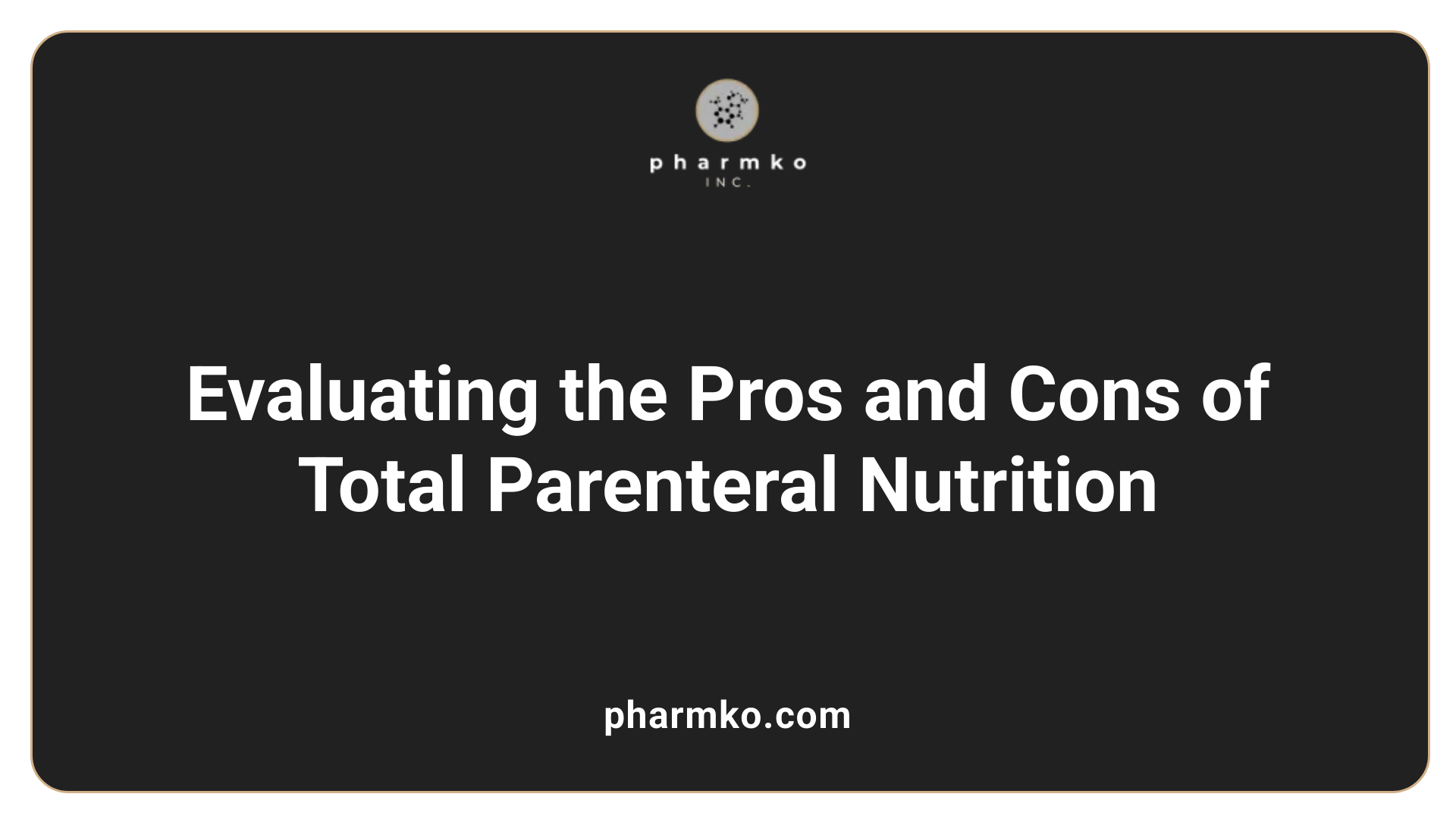
What are the benefits and risks associated with TPN therapy?
Total Parenteral Nutrition (TPN) provides a lifeline for patients whose digestive systems are not functioning effectively. It delivers essential nutrients directly into the bloodstream, enabling the body to receive the necessary vitamins, minerals, and macronutrients crucial for recovery and overall health.
Benefits of TPN
- Comprehensive Nutritional Support: TPN offers a tailored nutritional solution, addressing the specific needs of patients with conditions like short bowel syndrome, abdominal surgery recovery, and cancer treatments.
- Prevention of Malnutrition: By bypassing the gastrointestinal tract, TPN helps prevent malnutrition in patients who cannot consume adequate food orally or via enteral feeding.
- Independence for Patients: Especially beneficial for long-term users, TPN can be administered at home, allowing patients to maintain a degree of independence while ensuring their nutritional needs are met.
- Enhanced Quality of Life: Patients receiving TPN, particularly in home settings, often report improvements in their overall wellbeing, allowing them to engage in daily activities more effectively.
Risks of TPN
- Infection: The use of central venous catheters increases the risk of infections, which can be serious and life-threatening.
- Metabolic Complications: Patients may experience metabolic issues such as electrolyte imbalances or liver dysfunction, necessitating ongoing monitoring and adjustments to their TPN formulations.
- Nutrient Deficiencies or Excesses: Without careful management, patients may suffer from deficiencies in essential nutrients or experience toxicity from excess levels.
Careful oversight by healthcare professionals is essential to mitigate these risks and ensure optimal nutritional delivery, emphasizing that while TPN can be life-saving, it requires meticulous management.
Optimizing TPN Infusion and Monitoring
What should be considered regarding the infusion rates of TPN?
When managing Total Parenteral Nutrition (TPN) infusion rates, several aspects must be carefully considered to ensure patient safety and nutritional efficacy. For patients receiving peripheral TPN, infusion rates can sometimes exceed 150 mL/hour. This is particularly necessary when fluid volume requirements are elevated. However, monitoring carbohydrate intake is vital, as it should remain below 7.2 g/kg/day. Excessive carbohydrate intake can lead to complications like fatty liver and hyperglycemia, impacting the patient’s recovery.
In stable patients requiring higher caloric intake, glucose infusion rates can be increased, but this should be approached cautiously. In cases of central TPN, the management of osmolality is critical; abrupt changes in infusion rates can raise the risk of Refeeding Syndrome—a dangerous condition that can occur when feeding resumes after a period of malnourishment. Therefore, it is essential to adjust infusion rates gradually to maintain stable blood glucose levels.
Additionally, TPN solutions should always be delivered continuously via infusion pumps. to prevent interruptions. They must not hang for more than 24 hours to minimize the risk of infection and maintain the sterility of the nutrient solution. Proper administration techniques and monitoring protocols significantly enhance patient safety and overall treatment outcomes.
Comparing TPN with Enteral Nutrition
How does TPN compare to other nutritional delivery methods such as enteral nutrition?
Total parenteral nutrition (TPN) is an essential method for delivering nutrients directly into the bloodstream for patients who are unable to absorb nutrients via their gastrointestinal tract. This distinction is significant because enteral nutrition, which utilizes the digestive system, is not an option for individuals suffering from severe malnutrition, bowel obstruction, or conditions requiring complex nutritional management, such as cancer treatment complications.
Nutritional Efficacy
The efficacy of TPN can be linked to its ability to provide complete nutrition through an intravenous (IV) delivery system. By bypassing the gastrointestinal (GI) tract, TPN ensures immediate nutrient uptake, which is crucial for patients with non-functional or severely compromised digestion. The tailored formulas contain a precise combination of carbohydrates, proteins, fats, vitamins, and minerals, accommodating individual nutritional needs based on ongoing lab tests.
In contrast, enteral nutrition is generally preferred due to its benefits for gut health and lower risks of complications, such as infections. When the digestive system is functional, enteral feeding maintains intestinal integrity and supports natural digestion. Nevertheless, TPN remains a lifesaving option for those who cannot tolerate enteral feeding, highlighting an essential aspect of medical nutrition therapy that must be adapted to each patient's unique circumstances.
| Nutritional Method | TPN (Total Parenteral Nutrition) | Enteral Nutrition |
|---|---|---|
| Nutrient Delivery | Directly into bloodstream | Through the GI tract |
| Indications | Non-functional GI, severe malnutrition | Functional GI, some malabsorption |
| Monitoring Needs | Frequent lab tests for balance | Lower monitoring frequency |
| Complications Risk | Higher risk of infection | Potential GI complications |
Both TPN and enteral nutrition require an interdisciplinary approach to ensure the most appropriate and effective nutritional care for patients, highlighting the importance of continual assessment in clinical settings.
The Crucial Role of Nutritional Support Teams
Importance of Support Teams
Nutritional Support Teams (NST) play a vital role in the management of Total Parenteral Nutrition (TPN) for patients with complicated medical conditions. Their multidisciplinary approach typically includes physicians, dietitians, pharmacists, and nurses who work collectively to assess and meet the nutritional needs of patients. This collaboration ensures that each TPN solution is tailor-made, addressing the unique health issues of each individual, including their lab results and dietary requirements.
These teams are especially important for critically ill patients or children who require immediate and specialized nutritional interventions. By facilitating timely administration of TPN, NSTs mitigate the risk of malnutrition and its associated complications, such as central line infections. Their expertise guarantees an organized delivery of care, which can substantially improve recovery outcomes.
Enhancing TPN Care
The involvement of NST has been shown to enhance TPN care significantly. Studies reveal that patients under the supervision of NST frequently achieve their nutritional goals more effectively than those managed by primary care providers using nonspecialized staff. This improvement is reflected in better nitrogen balance and reduced complications related to metabolic issues, including metabolic syndrome and infections associated with central venous catheters.
Furthermore, adherence to guidelines from organizations such as the National Institute for Health and Care Excellence (NICE) reinforces the structured assessments that NSTs perform. These assessments are crucial, especially for vulnerable populations like children who face greater risks related to undernutrition. By employing a well-coordinated NST, healthcare systems can enhance patient care while potentially reducing costs associated with treating malnutrition-related complications.
TPN: Moving Towards Home-Based Care
Home Administration of TPN
Home parenteral nutrition (HPN), which involves the administration of Total Parenteral Nutrition (TPN) at home, has gained recognition for providing essential nutritional support to patients who are unable to meet their dietary needs through traditional means. This approach allows patients to receive their nutrients directly into the bloodstream, bypassing the digestive system in a comfortable setting.
Patients undergoing HPN often report enhanced independence and a greater ability to engage in daily activities, including work and social interactions. Training and support from healthcare professionals ensure that patients and caregivers can successfully manage the infusion process at home.
Impact on Quality of Life
The transition to HPN has been linked with significant improvements in overall quality of life for many patients. Clinical studies have shown that patients experience reduced anxiety and depression, alongside better nutritional outcomes and weight gain, especially those with cancer or gastrointestinal disorders. After moving to home-based care, patients typically report enhanced physical functioning, improved vitality, and better mental health, ensuring that they can navigate life's challenges while maintaining their nutritional status.
| Aspect | Before HPN Condition | After HPN Transition |
|---|---|---|
| Anxiety Levels | Higher | Reduced |
| Nutritional Status | Poor | Improved |
| Body Weight | Decreased | Increased |
| Physical Functioning | Limited | Enhanced |
Overall, HPN not only addresses patients' nutritional requirements but also contributes to their psychological well-being and daily life engagement.
Final Thought: Enhancing Patient Outcomes with TPN
Total Parenteral Nutrition (TPN) plays a pivotal role in improving nutrition delivery for patients unable to digest or absorb nutrients through conventional means. While this therapy presents certain risks, its benefits in terms of patient recovery, quality of life, and nutritional improvement cannot be overstated. As advancements in medical practices continue to evolve, TPN remains an indispensable tool, necessitating thorough oversight by specialized nutritional support teams to maximize patient outcomes and ensure safe, effective care.
References
- Parenteral Nutrition: What it Is, Uses & Types - Cleveland Clinic
- Total parenteral nutrition by a nutrition support team - PubMed
- Home Total Parenteral Nutrition (TPN) - Eitan Medical
- Total Parenteral Nutrition (TPN) Frequently Asked Questions
- TPN vs. Tube Feeding: How Are They Different?
- How Total Parenteral Nutrition (TPN) Works - Verywell Health
- Total parenteral nutrition: A boon to non-functional gastrointestinal ...
- TPN and Quality of Life - Moog Medical




















